I recently made the jump to a digital SLR after many happy years of using 35mm film SLRs and rangefinders. What really did it: when the local Ritz camera started paring down its film offerings, in particular I no longer have a ready supply of the Kodak 400CN (chromo-negative, meaning it comes out as black and white). Ok, my auto-focus SLR was also getting long in the tooth with the pop-up flash not working, and I've long since given up on using the meters built into my manual SLR and rangefinder (so I'm one of the few photographers my age who use an analog lightmeter.)
I got a Pentax K-x. Main features: it is compact (one of the smallest SLRs with the APS sized sensor) and my Pentax lens collection still works. Like most consumer digital SLRs, it comes with a 18-55mm zoom lens. But like most kit lenses, you get what you pay for. Ok for tourist shots in nice, well lit places where you want simple snapshots, but to get low-light or depth of field effects, you need something else. Options are to spend $1000+ on good zoom lenses, or use primes. (non-zoom lenses). Primes are smaller. They are cheaper. And I already own a few good ones.
It has been a while since I've gone for a decent shoot, so today I decide to take it through its paces. Like any proper project, I need a goal. Today's goal: Three primes. The task, go on a shoot with three prime lenses. In 35mm, you choose the primes so that they are separated by a set ratio, either 1:2 or 1:1.5. So I used to use 24mm:50mm:100mm or 35mm:50mm:75mm. I'm not sure how this works in digital, but I suffer because of the 1:1.5 magnification factor caused by using the APS sensor found in most digital SLRs as opposed to 35mm film. So I go out with the following lenses:
SMC Pentax 2.8 24mm (36mm equivalent)
SMC Pentax-A 2.8 28mm (42mm equivalent)
SMC Pentax-F 1.7 50mm (75mm equivalent)
Some other complications. The 50mm is the only one of these lenses with Auto-Focus. The 24mm does not even have autoexposure. So three lenses, each of them require different operating practices. The 50mm is the easy one. Everything works. The 28mm is not terribly hard either. All exposure and TTL functions work with the -A series lenses as long as the Aperature ring is set to the 'A' position. So I have a functioning non-AF 'Normal' lens. But not with 24mm lens. No 'A' position, so the camera cannot talk to the lens. In my film AF camera, this could not be used, because the built in exposure meter would not work. In the Pentax K-x, it is possible to program one of the buttons (the 'green' button) so that even though the exposure meter did not display, the camera can set the shutter speed for what it thought was correct exposure given the aperture set on the ring when the camera is in manual exposure mode. Then it is your job to set any compensation. The other issue is when putting one of the non-AF lenses on the camera. Because the camera cannot communicate with the lens, you have to tell the camera what the focal length is via the control wheel and a button.
There are a few tasks to undertake today. First is to get used to operating the camera. In particular, a camera that has buttons while wearing gloves because of the snow. The second task is to get used to the effects of magnification on focal length. For digital SLRs, the conversion of focal length for the APS sized sensor is ~ 1:1.5 (only a few upper end DSLRs have full-frame 35mm sensors). Part of being a good photographer is to know the effects of focal length, and compare it to the effects of changing your own position in composition (how it compresses the scene, depth of field, relative sizes and locations of objects in frame, etc.) And the only way to get this is practice. Which digital cameras are supposed to be good for.
Some notes:
- The 24mm is manageable, which is better then I feared. Again what makes it work is the ability of the camera to quickly set a baseline metered position, then you use your old manual exposure skills to make tradeoffs between stops of over or under exposure, as well as the tradeoff between shutter speed and aperture for DoF effects.
- The 28mm pretty much works just like any other lens. I prefer to use manual focusing anyway since I'm as fast as the camera for anything reasonably close.
- The K-x has rubber grip for the right hand which makes the whole hold on when wearing gloves thing not too bad.
- There are only a few buttons on the back. The hardest one is the four-way button set with center button that a lot of cameras have. And the Pentax has the usual 1/2 chiclet sized buttons here. But at least it does not get any smaller, because I think this is as small as I can get while wearing winter gloves, and it is a hassle.
All in all, not a bad shoot. I need more practice working with exposure, and learning how to compensate with the snow (the fact that it was overcast probably saved me today). And I see drooling over camera catalogs in my future)
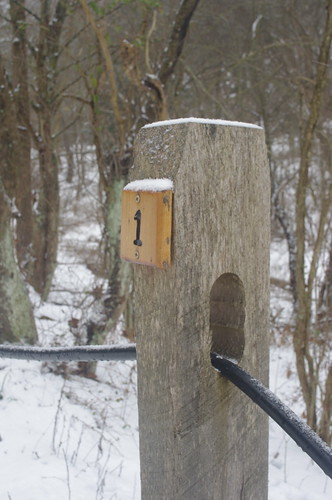
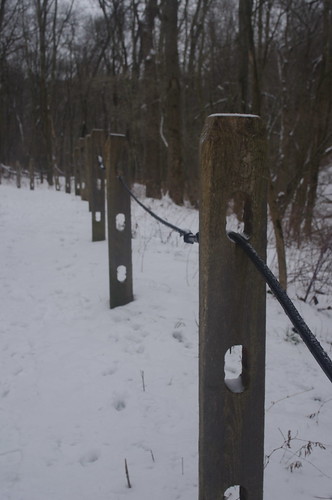
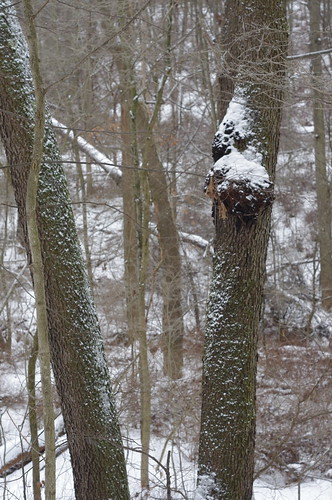
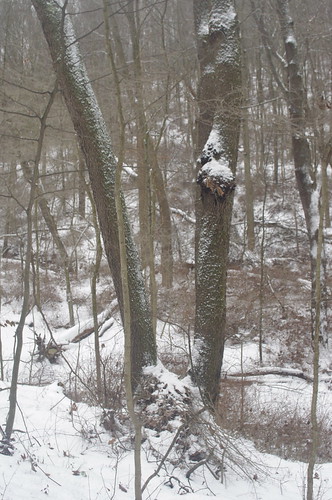
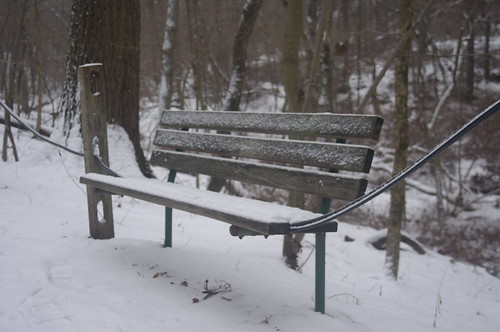
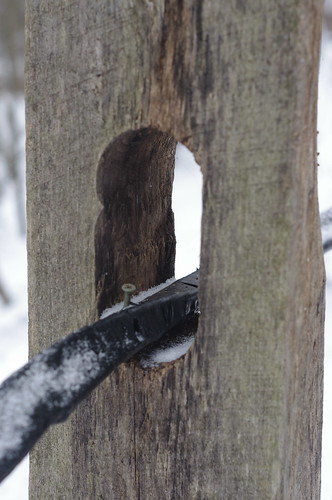
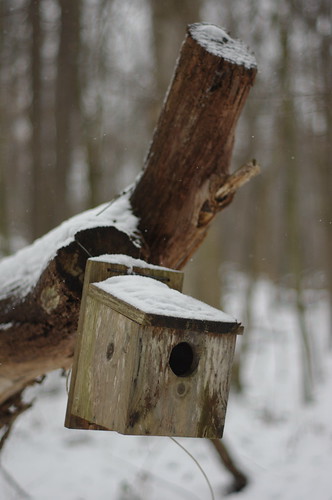

No comments:
Post a Comment